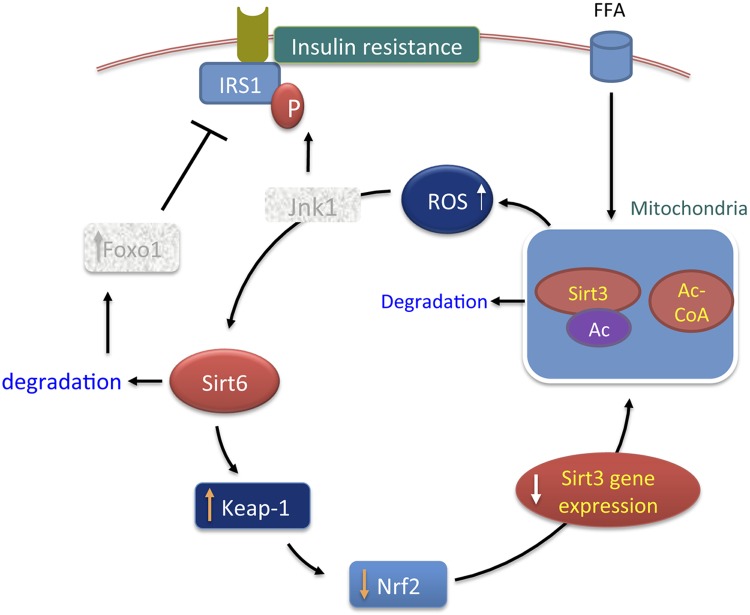Figure 13.
Model illustrating interdependent regulation of Sirt3 and Sirt6 and the mechanisms via which Sirt6 blocks development of diabetic cardiomyopathy. Under diabetic conditions, heart becomes dependent on free fatty acids (FFA) as an energy source. Increased FFA oxidation overloads mitochondria with acetyl-CoA (Ac-CoA), which causes acetylation and inactivation of multiple proteins, including Sirt3. Mitochondrial dysfunction promotes ROS synthesis, which causes down-regulation of Sirt6 and induces insulin resistance via activation of multiple downstream mechanisms (e.g., Jnk1). Sirt6 down-regulation up-regulates Keap1 expression and reduces Nrf2 levels, leading to suppression of the Sirt3 gene transcription. Sirt6 down-regulation also activates Forkhead box O1 (Foxo1), which suppresses IRS1 expression. Thus, initial mitochondrial dysfunction subsequently develops a vicious cycle, which further down-regulates Sirt3 and Sirt6 and induces insulin resistance, leading to development of diabetic cardiomyopathy. In this scheme, Sirt6 activation can reverse this process by promoting mitochondrial health and/or by suppressing expression of Foxo1. Jnk1 and Foxo1 are presented in shaded boxes because these molecules are not studied in this study; rather, they are taken from previous studies to explain the possible mechanism. Ac, acetylated; P, Phosphorylated.

